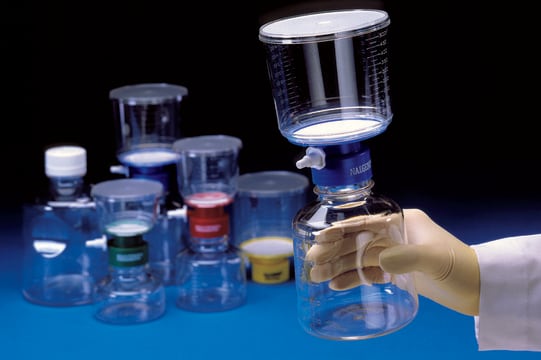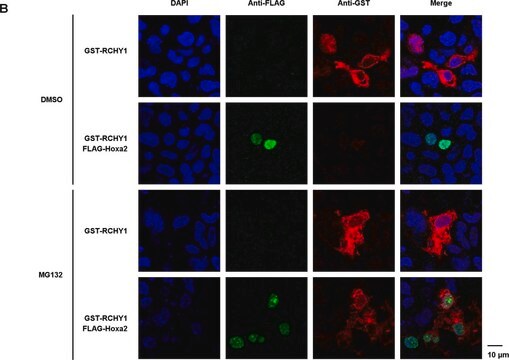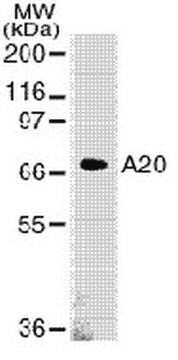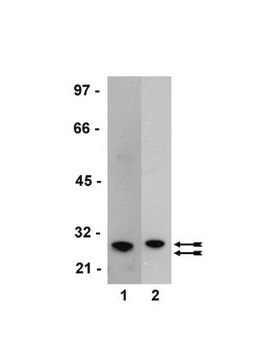AB3282
Anti-Glutathione-S-Transferase Antibody, S. japonicum form
Chemicon®, from rabbit
Sinónimos:
GST-tag
About This Item
Productos recomendados
origen biológico
rabbit
Nivel de calidad
forma del anticuerpo
purified antibody
tipo de anticuerpo
primary antibodies
clon
polyclonal
reactividad de especies
Schistosoma japonicum, vertebrates
fabricante / nombre comercial
Chemicon®
técnicas
ELISA: suitable
western blot: suitable
Nº de acceso NCBI
Nº de acceso UniProt
Condiciones de envío
wet ice
modificación del objetivo postraduccional
unmodified
Información sobre el gen
human ... GSTP1(2950)
Especificidad
The anti GST antibody reacts specifically with the glutathione S-transferase moiety of GST fusion proteins as expressed in E.coli by the pGEX (1) vectors and in yeast by the pYEX(TM) vectors (2).
(1)The pGEX expression vector system is a plasmid and purification system which, in most cases, results in the fusion protein being soluble in aqueous solutions for extraction and purification from crude bacterial lysates. This expression vector system enables the protein glutathione S-transferase (GST) to be produced in fusion with the protein of interest so as to bind with high affinity to a glutathione affinity column. The GST-protein complex can then be easily purified by elution from the column with reduced glutathione. The pGEX vectors are available as the GST System from Pharmacia Biotech.
(2) pYEX is a yeast GST expression vector supplied by AMRAD biotech of Australia.
Inmunógeno
Aplicación
Epitope Tags & General Use
Epitope Tags
Forma física
Almacenamiento y estabilidad
Información legal
Cláusula de descargo de responsabilidad
¿No encuentra el producto adecuado?
Pruebe nuestro Herramienta de selección de productos.
Código de clase de almacenamiento
12 - Non Combustible Liquids
Clase de riesgo para el agua (WGK)
WGK 2
Punto de inflamabilidad (°F)
Not applicable
Punto de inflamabilidad (°C)
Not applicable
Certificados de análisis (COA)
Busque Certificados de análisis (COA) introduciendo el número de lote del producto. Los números de lote se encuentran en la etiqueta del producto después de las palabras «Lot» o «Batch»
¿Ya tiene este producto?
Encuentre la documentación para los productos que ha comprado recientemente en la Biblioteca de documentos.
Nuestro equipo de científicos tiene experiencia en todas las áreas de investigación: Ciencias de la vida, Ciencia de los materiales, Síntesis química, Cromatografía, Analítica y muchas otras.
Póngase en contacto con el Servicio técnico








